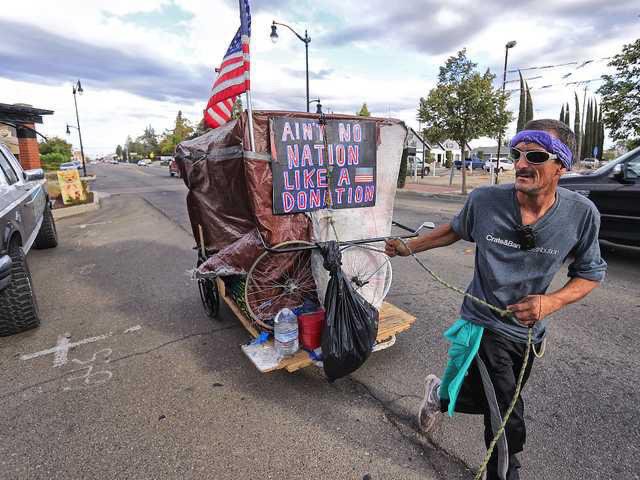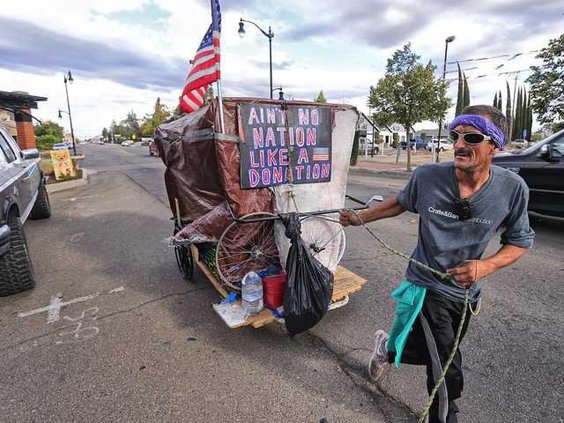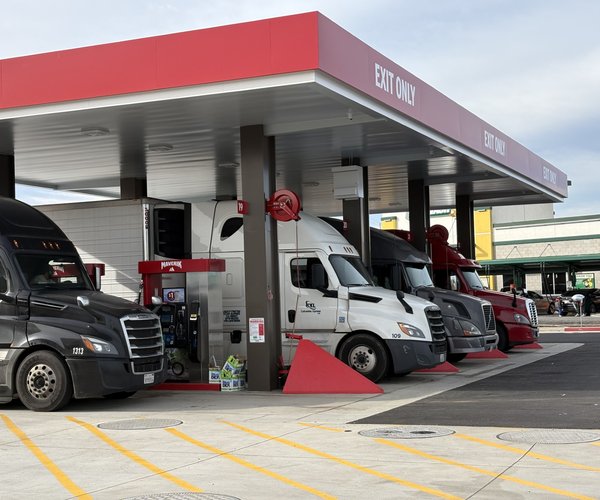A light rain was falling making the 1:30 a.m. darkness early Friday morning through the zombie zone, where Yosemite Avenue narrows to two lanes, even more treacherous.
It’s the stretch from Foster’s Freeze to the used car lot just before crossing the tracks into downtown Manteca.
It is an older residential street lined intermittently with parked cars.
Some of the more cautious owners of the parked vehicles will channel PG&E crews and place a reflective orange construction cone on the rear driver’s side of their vehicle.
Occasionally, it will be draped with LED lights.
This is not about the holiday spirit. It’s to reduce the odds of their vehicle being struck overnight.
The section of Yosemite Avenue is part of my early morning route home.
Occasionally, I’ll use Center Street.
I do so to check in the success of the city’s efforts to get the homeless off the street.
One of the signs is the Hotel Library.
More specifically, it is the vast sidewalk that runs up against the wrought iron fencing.
For more than six years, it has prevented the library courtyard from being transformed overnight into a garbage strewn mess with the slight stench of urine, traces of the No. 2, and broken lights from those homeless that literally wanted lights out as they slept or rigged a way to try and charge smartphones.
This is — or was — the go to place for those on the streets with a sense of self-preservation that hadn’t secured a “permanent” encampment spot.
They tended not to be as high as a kite.
And, after working with the Manteca Police’s homeless outreach officers, they tended to tidy up before they moved on before the sun spends much time above the eastern horizon.
It was, as more than several homeless have said, a safe place where they could look out after each other at night and have a sense of security.
It underscores an observation that many miss. Those at risk of being assaulted, victimized beyond property crimes, and harassed by the homeless tend to be other homeless.
The ever changing crowd that once populated the sidewalk in front of the library’s Center Street entrance that numbered at times as many as 15, logically would have included those homeless that still have a somewhat solid sense of self preservation.
Once the city opened the emergency shelter dorms at 555 Industrial Park Drive that currently has a waiting list for audit male beds, the number of overnight sidewalk sleepers in front of the library plummeted.
As of lately, not a soul can be spotted on most nights in front of the library,
That is a complete switch from the previous six years.
And the reason clearly can be traced back to the opening of the dorms by the city that have rules to access.
The ones most likely to do so tend to be those that have a sense of self-preservation.
As such, they are the ideal candidates — if one can call it that — to voluntarily enter a homeless navigation center program to work toward getting off the street.
This is not a digression.
The zombie zone is part of the main routes around Manteca where the restless homeless roam after 11 p.m. and much of the primarily commercial bustling east-west corridor rolls up the proverbial sidewalk.
Typically, you will come across the homeless bicycling or walking down the zombie zone after midnight and before dawn.
It’s America. They have the right to do so.
Many now have lights on their bicycles.
A significant few don’t.
Given the official uniforms of the homeless seems to run dark brown and navy blue clothing on the light side to black on the dark side, they can be a challenge to see.
It is especially true on a heavily tree-lined corridor that limits the effect range of streets lights on a moonless, cloud covered, or rainy night.
Toss in the narrow street with vehicles parked along it, and you have a treacherous situation.
And it is made worse, given it appears the overwhelming number of homeless walking and or pushing carts along the Yosemite Avenue segments avoid using the sidewalks like the plague.
While the city’s investment in replacing older road signs with the latest in reflective technology in recent months has helped significantly make everything from stop signs to those masking crosswalks visible under the cloak of darkness, the streets are still treacherous.
Many drivers that are out and about at that hour on a routine basis adjust to “running” the zombie zone gauntlet.
All it takes is coming up in the darkness of a homeless walking on the street side of a parked car or having a lightless bicycle pedaled by a homeless individual cut across the street in front of you at 2 a.m. to change your driving tactics as if you are navigating a potential land mine field.
Even then, if you drive that stretch at that hour of the night five days a week, you can count on being startled by at least one close encounter that can jar you even if you are already driving 5 mph below the posted speed and are on the lookout for the homeless.
In the past 10 years or so, an inordinate number of pedestrian fatalities have been among the ranks of the homeless in Manteca.
That includes two not within the Manteca Police’s jurisdiction who were struck and killed while crossing the 120 Bypass on foot by the Main Street interchange.
The danger of homeless — or any other pedestrian — walking in streets or crossing them willy nilly in the daytime is also a treacherous situation.
It happens against red lights.
It happens mid-block.
And it happens when they aren’t looking.
While it might be infuriating to some drivers about what is clearly a lapse in judgment or ignoring basic safety rules, it takes two to tango.
Driving is serious business.
And while the homeless should not have the run of the streets, neither should anyone else.
Rare is the driver of a vehicle without a traffic sin.
Slow down.
Pay attention to the road and movements of other vehicles, as well as bicyclists, and pedestrians.
Help make the streets of Manteca safer.
It could mean less injured and deaths among those that have homes and those that are homeless.
The homeless might draw our collective frustrations at times when they seem to roam aimlessly on the streets, but they are just the tip of the iceberg of those that suffer the consequences of distracted driving and traveling at speeds that are not safe for the conditions one is maneuvering
You should slow down when the homeless are in the zombie zone, just like you should do when there are children in a school zone.
This column is the opinion of editor, Dennis Wyatt, and does not necessarily represent the opinions of The Bulletin or 209 Multimedia. He can be reached at dwyatt@mantecabulletin.com





